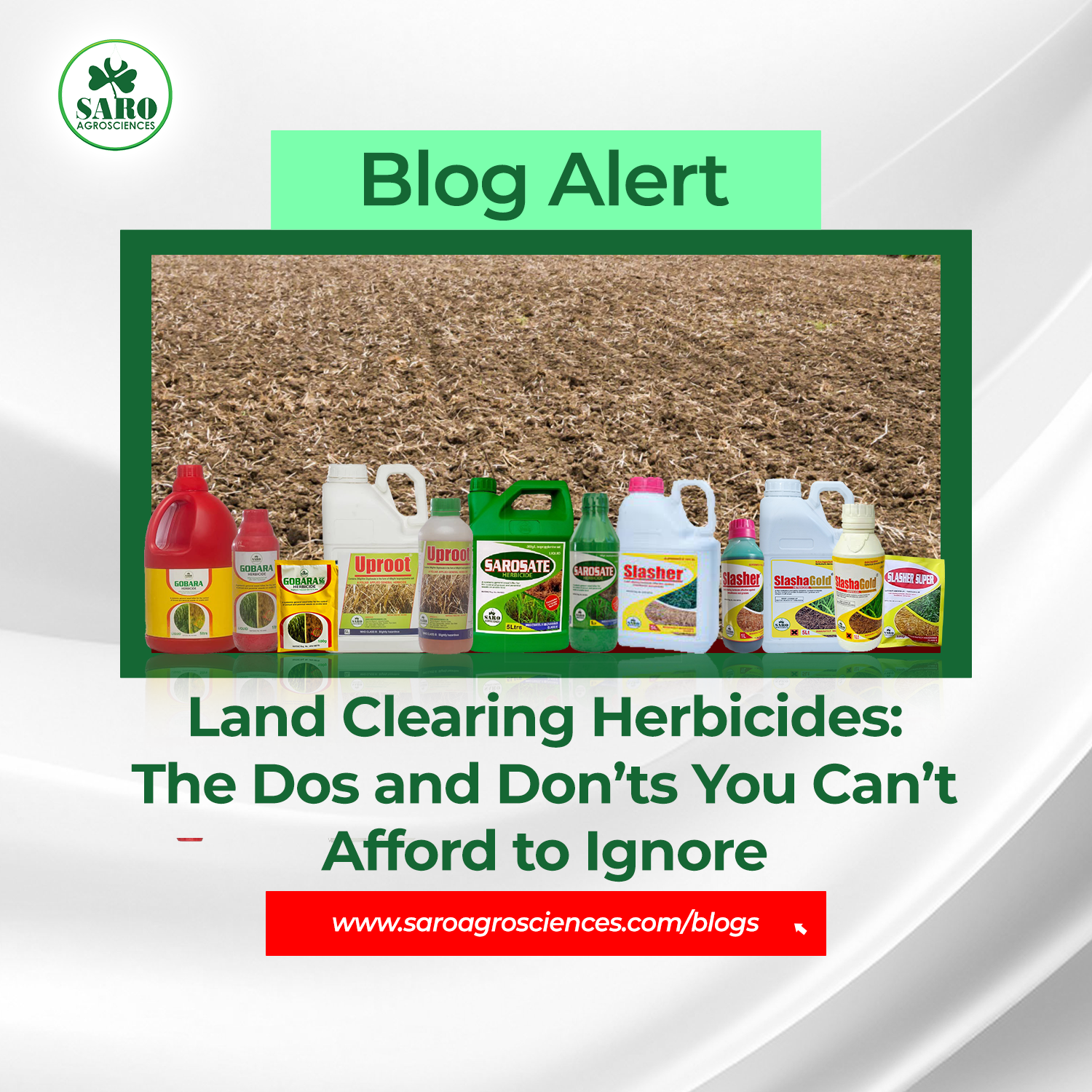Clearing land is a major first step in setting up any productive farm, but it’s not just about removing weds, grasses and sedges —it’s about doing it right. Herbicides are a fast, efficient way to eliminate unwanted weeds and prepare soil for planting, but if misused, they can damage your land, harm the environment, and reduce the quality of your harvest.
Here are the essential dos and don’ts every farmer or land clearer must follow when using land clearing herbicides:
DOs: What You Should Always Do When Using Land Clearing Herbicides
1. DO Choose the Right Type of Herbicide
Not all herbicides are created equal—and not all are safe.
Some land clearing herbicides, especially those containing Paraquat, are highly toxic and can pose serious risks to the environment, water sources, and human health.
Instead, choose environmentally safer options like Gobara SG, Uproot, Sarosate, Slasha Gold, Slasher Super, and Slasher.
These top land clearing products from Saro Agrosciences contain active ingredients like glyphosate and glufosinate, which are designed to be effective on weeds while safe for the environment. They break down quickly in the soil and pose lower risks to non-target organisms when used correctly.
2. DO Read and Follow the Label Instructions
Every herbicide product comes with specific guidelines on how to:
- Measure and mix properly
- Apply safely
- Handle spills and exposure
Ignoring the label is not only dangerous—it’s unsafe for you as a farmer and can lead to crop failure or environmental damage.
3. DO Take Note of the Time Lapse before Planting
After applying herbicides, it’s important to wait before planting any crops. Typically, this wait time takes about a week for the herbicide to break down enough for it to be safe to introduce new plants. However, this waiting period can vary depending on the type of herbicide used, soil conditions, and the specific crop you want to plant.
If you are unsure about the right waiting time, don’t guess—reach out to us for expert guidance. Planting too soon can result in poor germination or crop failure.
4. DO Use Proper Safety Gear
Always protect yourself during herbicide application by wearing PPE gear such as rubber gloves, long-sleeved clothing, goggles, a face mask or respirator, etc. This helps prevent accidental exposure through skin contact, inhalation, or eye splashes.
5. DO Store and Dispose of Products Safely
We recommend keeping herbicides in their original containers, away from food, children, and animals. If you must store it, we recommend ensuring it is in a cool, dry place once done, make sure to dispose of empty containers properly.
Please, never reuse them for food or water.
DON’Ts: Mistakes You Must Avoid
1. DON’T Over apply
Spraying more herbicide than recommended won’t make the weeds die faster—it only wastes product and money, damaging the soil, and affecting future crop growth. Beyond these, the herbicides may stack up in the area, thus increasing the risk of herbicide resistance in weeds. Use only what’s needed. The earth will thank you.
2. DON’T Ignore Re-Entry Intervals
Every herbicide has a re-entry period—a specific time you must wait after application before entering the field again. Ignoring this can expose you (and your workers) to harmful residues that haven’t yet broken down.
Always check the label and respect the waiting period.
Land clearing is more than a job, it’s the foundation of your farming future. The herbicides you choose and how you use them will impact your yield, your soil health, and your legacy as a responsible farmer.
Choose products like Gobara SG, Uproot, Sarosate, SlashaGold, Slasher Super and Slasher for safer, cleaner land preparation. Follow best practices, protect your environment, and set your farm up for success.
Clear wisely. Farm responsibly. Grow sustainably.

Leave a Reply